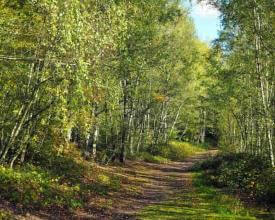DHA eNews – Europe Releases New Guidance On EUDR
Trade policy continues to be uncertain and changing rapidly in both the U.S. and Canada. Canada recently issued a surtax remission for decorative hardwoods imported from the U.S. Trade representatives from Taiwan and Japan, among others, have visited the U.S. to discuss tariff deals, while others, including Vietnam, have had phone conversations. DHA is closely monitoring the outcomes of the discussions and their impacts on our industry. We'll talk more about the details at our upcoming annual meeting in San Antonio from May 13 - May 15. All DHA members are encouraged to attend.
Picking up on DHA efforts to push back on misleading marketing of fake wood products, the Missouri General Assembly has introduced legislation to counter the misleading marketing as "wood" for products like vinyl and laminate that only look like wood. Missouri Forest Products Association Executive Director Brian Brookshire will talk about the legislation at our annual meeting.
If you have questions or comments, contact me. I look forward to hearing from you.

Keith A. Christman, President

The European Commission has released updated FAQs and guidance to simplify the implementation of the EU Deforestation Regulation (EUDR). The goal is to cut administrative burdens on companies by 30% and streamline processes such as due diligence statement submissions. Key changes include allowing annual submissions, reusing existing statements for reimported goods, and enabling authorized representatives to manage submissions on behalf of companies or groups of companies. Overall, however, the changes still favor countries in the EU and do not address the considerable concerns of those in the forest industry, including geolocation requirements and details that apply to low-risk countries.
On April 16, Canada issued a remission order on some tariffs imposed on U.S. goods. The remission order, which means that importers will not have to pay those tariffs, is for plywood and veneer inputs imported from the U.S. that are used in the manufacture or processing of plywood and other products in Canada until October 16, 2025.
DHA and allied organizations sent a letter to Congress advocating for the Disaster Reforestation Act. The act would allow landowners to deduct the true value of timber destroyed by disasters. This long-overdue policy would allow private landowners to replant, recover, and continue stewarding U.S. working forests—the forests that support rural jobs, provide critical environmental benefits, and form the backbone of the U.S. timber supply chain.
The Missouri General Assembly has introduced legislation to "combat misleading or deceptive practices related to the wood industry." The act says that only products derived from wood can be advertised or marketed as "wood." The Missouri Forest Products Association stated that the law is a victory for the "forest products industry in the state of Missouri and most importantly, consumers."
A recent presidential memorandum directs federal agencies to modernize environmental permitting by leveraging technology to streamline processes for infrastructure projects like roads, bridges, mines, and power plants. The goal is to eliminate paper-based applications, accelerate processing times, reduce duplicative data submissions, and improve interagency coordination. It also establishes a Permitting Innovation Center to develop and test new digital tools for environmental reviews.
The U.S. Fish and Wildlife Service proposed a rule to rescind the regulatory definition of harm under the Endangered Species Act. Currently, "harm" includes modifications to habitat that severely disrupt vital behaviors such as breeding and feeding. Now, the USFWS says that this interpretation is too broad and extends beyond the intended scope of the statutory term "take," which refers to direct actions like hunting or killing.
On April 17, the U.S. Trade Representative announced its final action on Chinese-built ships, in addition to more proposed actions to "combat unfair Chinese trade practices" related to global shipping. The first phase of the final action is a 180-day grace period when no fees will be charged. After that, owners and operators of Chinese-built ships will be charged based on net tonnage per U.S. voyage.
The head of Vaughan-Bassett discussed how his firm, one of the few remaining U.S. manufacturers of wooden furniture, is navigating through the uncertainty created by tariffs and economic policy whiplash. Vietnam—not China—is the lead exporter of wood furniture to the U.S. and the 800-pound gorilla of the industry.
The volume of cabinet sales fell by 14.8% in March vs. the same month in 2024, while the dollar value of cabinet sales declined by 4%. Year-to-date sales volume fell by nearly 15%.
DHA member Shaw is restructuring to better align with its customer-centric strategy. Now, the leaders of Shaw's three core businesses have been named presidents of their respective divisions and are fully accountable for strategy, performance, and operations within their divisions.
Oregon's wood products manufacturing industry has undergone losses but is still the third-largest manufacturing industry in the state. Wood products manufacturing and the jobs it provides are especially important in Oregon's rural areas.
The jet-engine powered, ultra-heavy lifting, long-endurance firefighting drones can carry up to about 900 pounds of water and remain in the air for up to four hours—and still fit on a flat-bed truck. The drones are 8' x 8' and weigh about 2,000 pounds. They can respond quickly and precisely, delivering water safely to the frontlines at night, in low visibility, and in conditions unsafe for crewed aircraft.
Wisconsin reported that it planted nearly 11 million trees and conserved more than 57,000 acres of forestland in 2024. This brings the state closer to its goal of planting 100 million trees and conserving 125,000 acres of forest by 2030.
The governor of Idaho signed an executive order designed to ramp up timber harvests. The order directs the Idaho Department of Lands to expand its partnership with the U.S. Forest Service to reduce wildfire risk in Idaho's federally managed forests. Active management includes "increasing timber harvest, restoring watersheds to support the industry, protecting communities, and making our forests healthier, more resilient and resistant to catastrophic wildfire."
Which hardwood tree was used to determine the causes of a pivotal moment in the history of Roman Britain?





